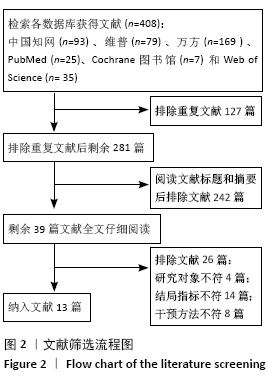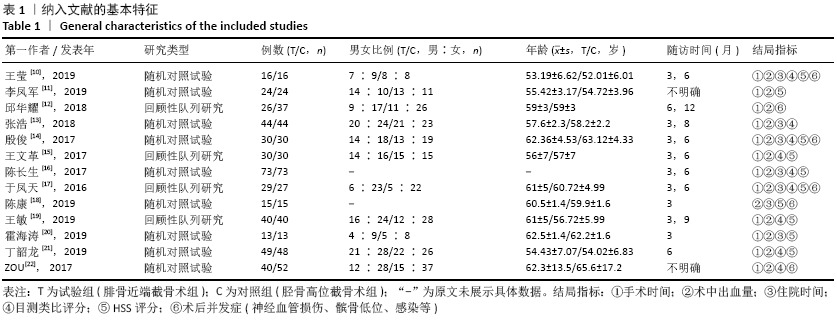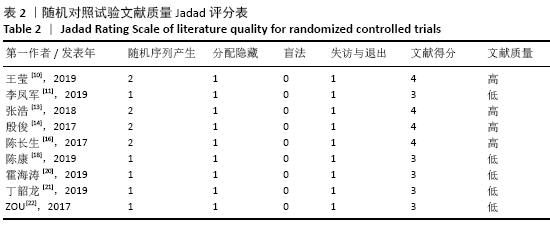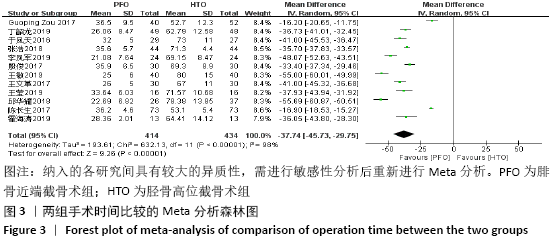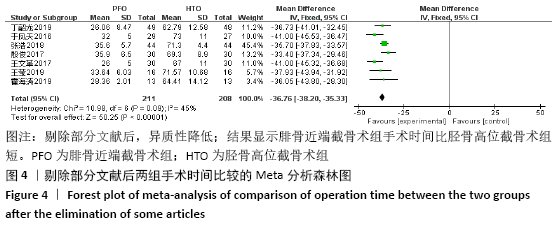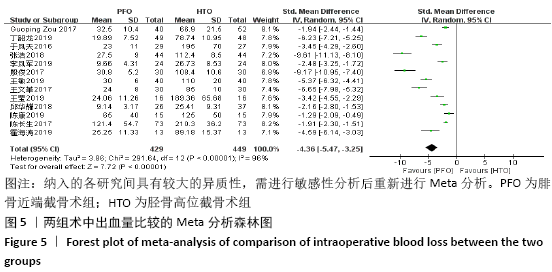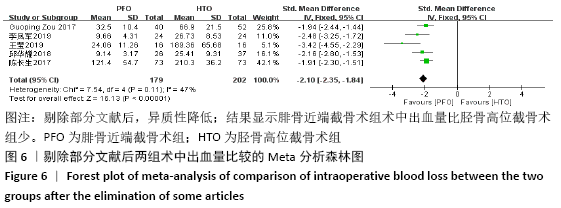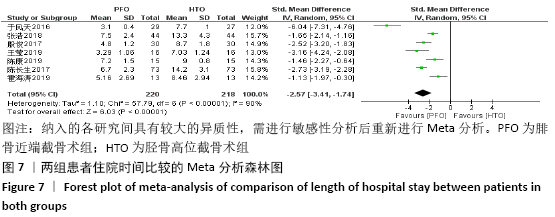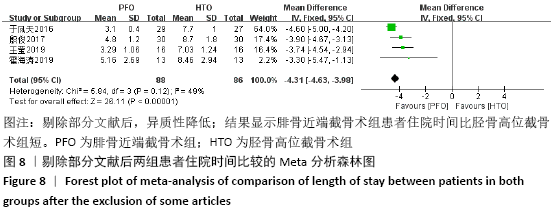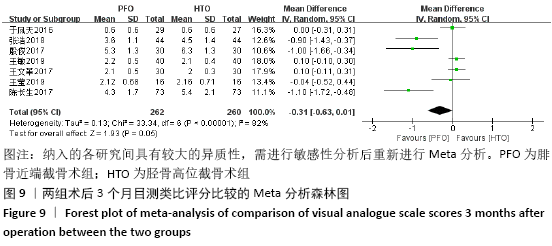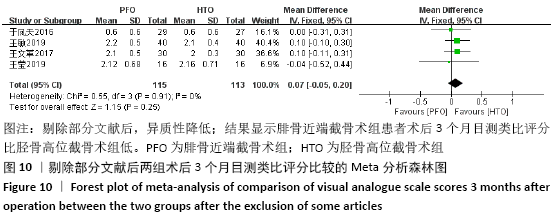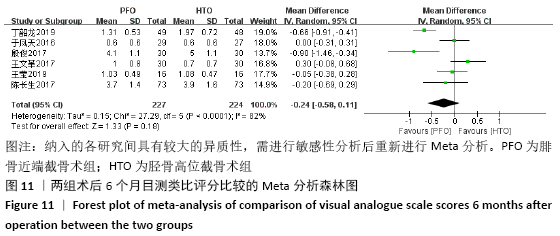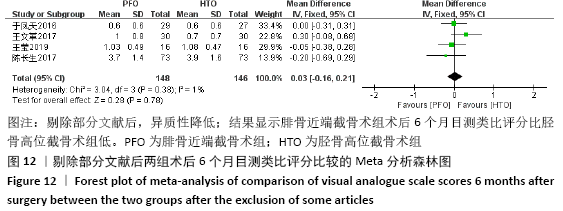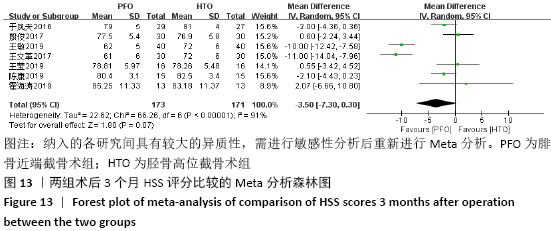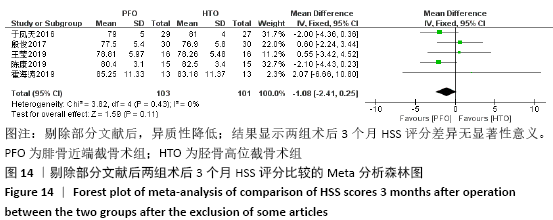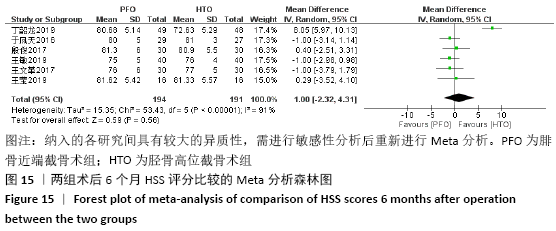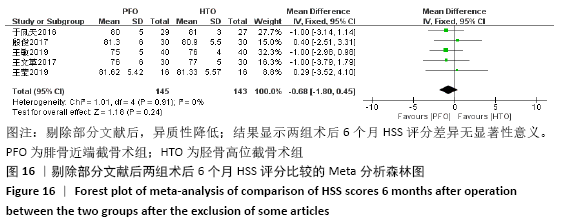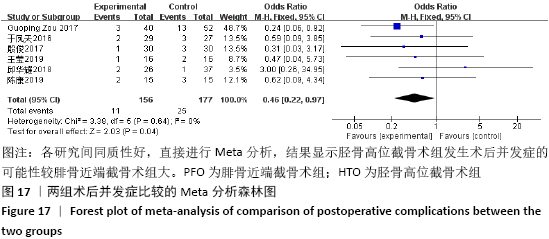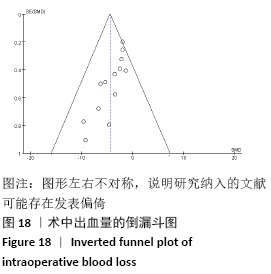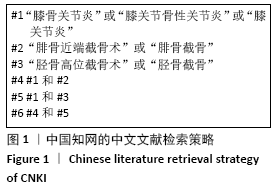中国组织工程研究 ›› 2021, Vol. 25 ›› Issue (18): 2945-2952.doi: 10.3969/j.issn.2095-4344.3848
• 骨与关节循证医学 evidence-based medicine of the bone and joint • 上一篇
腓骨近端与胫骨高位截骨治疗膝骨关节炎有效及安全性的Meta分析
黄泽灵1,施珊妮1,何俊君1,2,高弘建1,葛海雅1,洪振强1,2
- 1福建中医药大学中医学院,福建省福州市 350122;2 中医骨伤及运动康复教育部重点实验室,福建省福州市 350122
Meta-analysis of safety and effectiveness of proximal fibular osteotomy and high tibial osteotomy in the treatment of knee osteoarthritis
Huang Zeling1, Shi Shanni1, He Junjun1, 2, Gao Hongjian1, Ge Haiya1, Hong Zhenqiang1, 2
- 1School of TCM, Fujian University of Traditional Chinese Medicine, Fuzhou 350122, Fujian Province, China; 2Key Laboratory of Orthopedics & Traumatology and Rehabilitation of Traditional Chinese Medicine, Ministry of Education, Fuzhou 350122, Fujian Province, China
摘要:
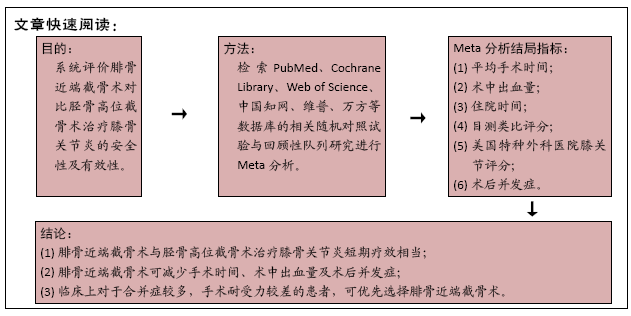
文题释义:
胫骨高位截骨术:出现于20世纪60年代,指通过手术截去胫骨平台下方约2 cm处的骨质,将膝关节内侧的压力转移一部分至外侧,以减轻膝关节内侧关节面的过度负荷,缓解患者症状的手术方法。
腓骨近端截骨术:是2014年张英泽等学者基于“膝关节不均匀沉降理论”而提出的手术方法,指通过截断腓骨近端部分骨质以改善内侧间室压力,从而延缓膝骨关节炎发展的手术方法。
目的:腓骨近端截骨术与胫骨高位截骨术临床治疗膝骨关节炎各存在不同的优势,但对于两种术式的选择尚不明确。文章系统评价腓骨近端截骨术对比胫骨高位截骨术治疗膝骨关节炎的有效性及安全性。
方法:计算机检索Pubmed、Cochrane Library、Web of science、中国知网、维普、万方等数据库,搜索腓骨近端截骨术对比胫骨高位截骨术治疗膝骨关节炎的临床研究。筛选文献后,对纳入文献进行资料提取及质量评价,采用改良Jadad量表对纳入的随机对照试验文献质量进行评价,采用Newcastle-Ottawa Scale文献质量评价表评估纳入的队列研究的质量,采用RevMan 5.3软件对纳入研究结局数据进行统计分析。对于异质性显著的指标,通过排除部分偏离森林图的文献降低异质性后再进行合并分析;同时绘制漏斗图分析纳入研究的发表偏倚。
结果:①纳入文献13篇,包括中文文献12篇,英文文献1篇,共878例患者;②文献质量评价显示:9篇临床随机对照试验中高质量文献4篇、低质量文献5篇,4篇回顾性队列研究中高质量文献3篇、低质量文献1篇;③Meta分析结果显示:两组患者术后3个月目测类比评分(MD=0.07,95%CI:-0.05-0.20,P=0.25)、6个月目测类比评分(MD=0.03,95%CI:-0.16-0.21,P=0.78),术后3个月HSS评分(MD=-1.08,95%CI:-2.41-0.25,P=0.11)、6个月HSS评分(MD=-0.68,95%CI:-1.80-0.45,P=0.24)均无显著差异。但与胫骨高位截骨术组相比,腓骨近端截骨术组平均手术时间(MD=-36.76,95%CI:-38.20至-35.33,P < 0.000 01)、患者术中出血量(MD=-2.10,95%CI:-2.35至-1.84,P < 0.000 01)及住院时间(MD=-4.31,95%CI:-4.63至-3.98,P < 0.000 01)明显更少,且术后并发症的发生率也更低(OR=0.46,95%CI:0.22-0.97,P=0.04)。
结论:腓骨近端截骨术与胫骨高位截骨术治疗膝骨关节炎短期疗效相当,但腓骨近端截骨术可减少手术时间、术中出血量及术后并发症,临床上对于合并症较多、手术耐受力较差的患者,可优先选择腓骨近端截骨术。但由于受所纳入研究的质量及随访时间限制,尚需更多多中心、大样本且随访时间长的高质量临床研究予以验证。
中图分类号:
